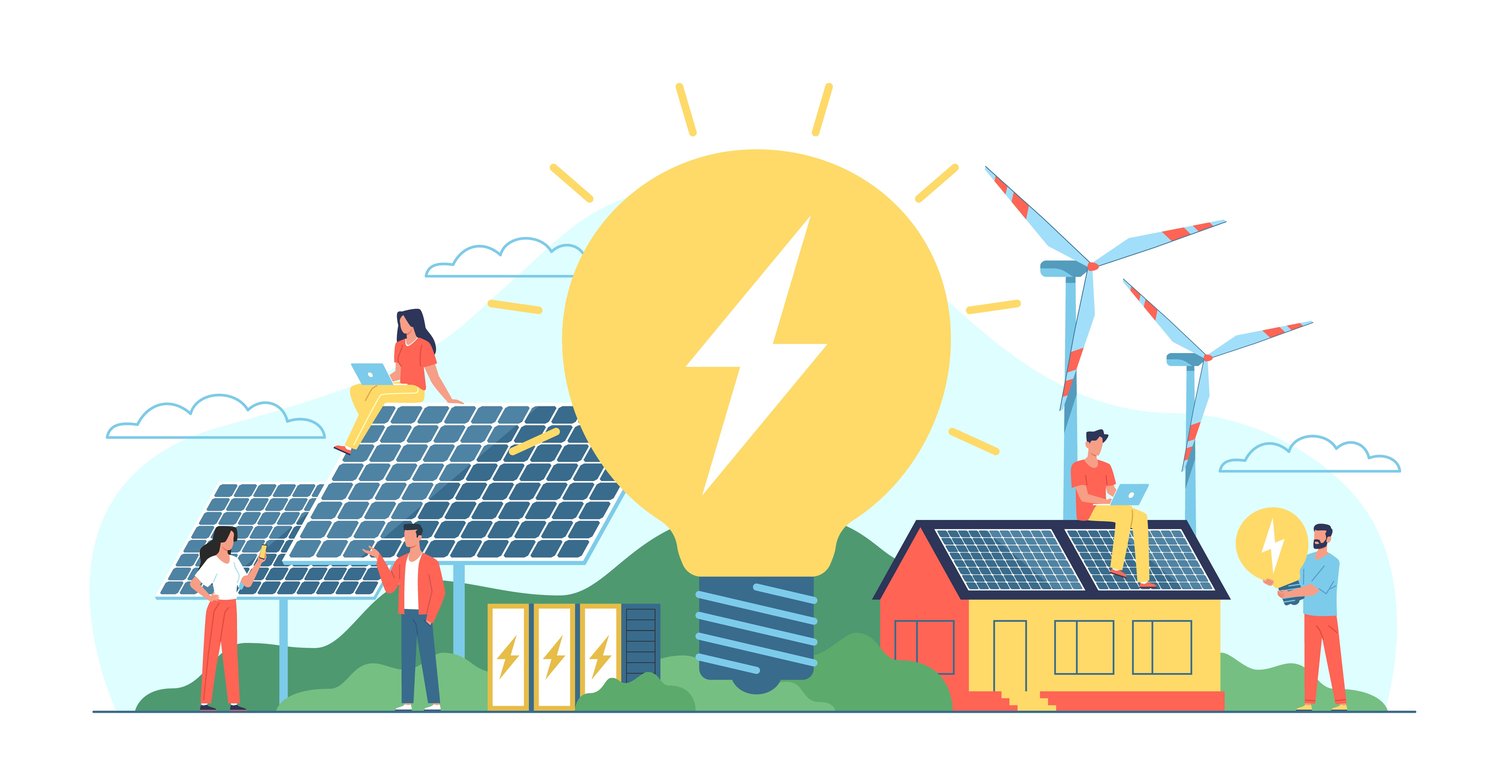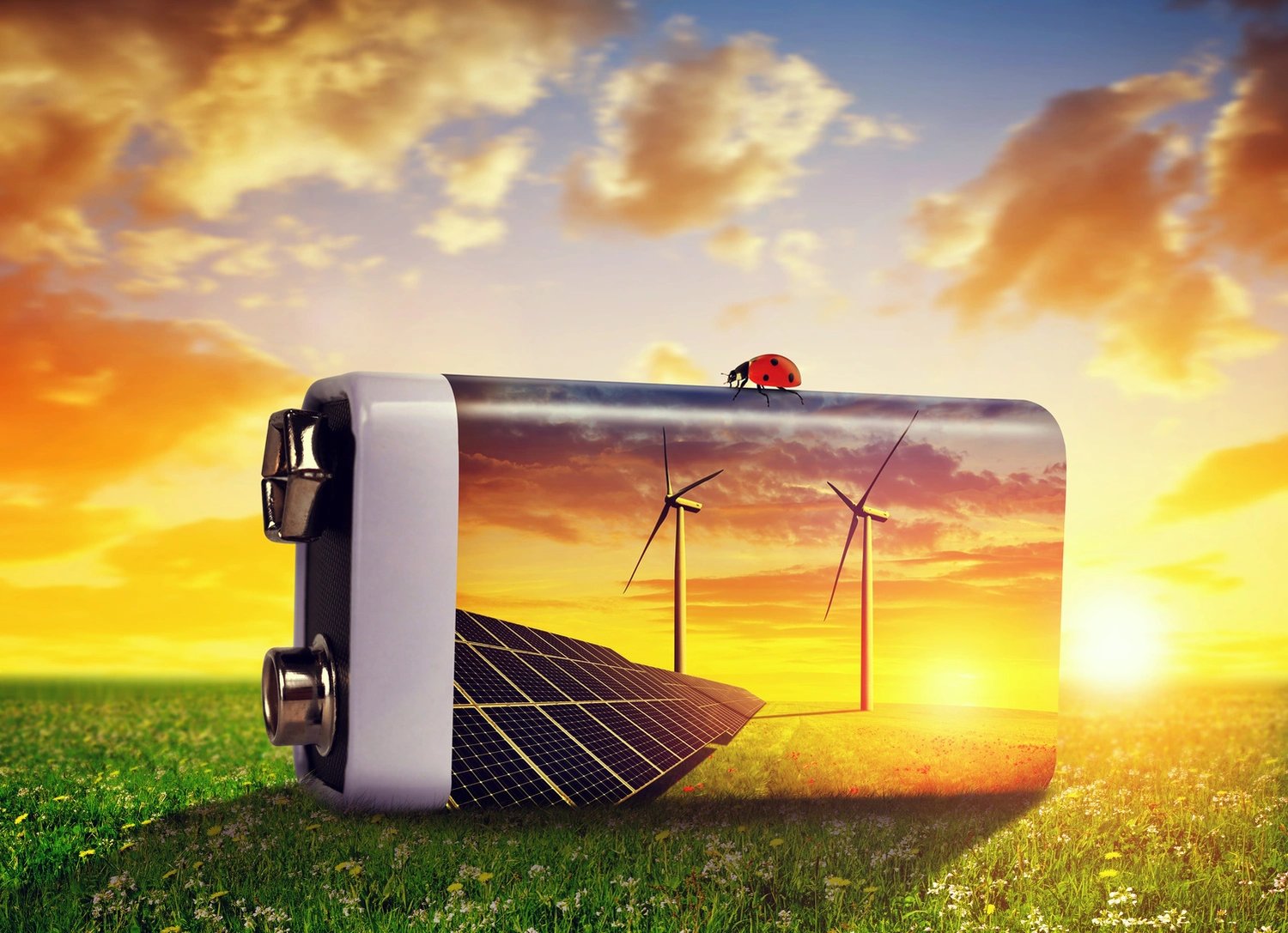Battery Storage for the Renewable Energy Industry
Free Permitting Checklist
Practical Tips to Avoid Environmental Risk on all Your Projects
Download our environmental permitting checklist to get a step-by-step list of ways to protect your project from the 9 most common environmental risks.
Download Your Checklist
The Current Renewable Power Industry
Solar Power
Solar power is one of the most common reference points for renewable energy. It exists both on the residential and utility-scale, with the ability to serve many different populations. The global solar market has continued to expand in recent years, increasing the prevalence of solar power plants.
Currently, solar energy makes up about 3% of the U.S. energy market. Solar energy will exponentially expand as many nations seek net zero carbon emissions and more clean energy solutions. The U.S. solar energy market is currently at a capacity of 129 gigawatts and is likely to reach 336 gigawatts in 2027. This expansion is due to the attack on climate change via legislation such as the Inflation Reduction Act (IRA.) This act provides extensive financial aid to the solar expansion movement via funding and tax credit efforts. In total, $40 billion is included in the act to progress greentech, such as electric vehicles and solar panels. Additional actions, such as the Solar Investment Tax Credit (Solar ITC) Extension, allow for more financial support for solar developments.

Wind Farms
This energy source is America's most common renewable energy source, generating 10% of U.S. energy. As the nation's largest renewable energy source, the industry currently supports over 120,000 jobs, yields 136 GW of energy with 13,413 megawatts installed in 2021 alone, and is expected to grow exponentially in the coming years. Wind energy is considered a lower-cost green energy resource prevalent in many areas of the U.S. However, finding the right wind farm site proves tricky, with site selection playing a significant role in the development process.
Hydro Power
Hydropower makes up 6.3% of U.S. energy generation and 31.5% of the nation's renewable energy and is one of the country's oldest and largest renewable industries. Hydropower is one of the significant proponents of energy flexibility, as its four forms allow for an extensive energy supply. The industry plays a vital role in the clean energy transition and has already begun integrating energy storage into many projects.
What Is Energy Storage
Energy storage solutions are technology systems that capture the energy generated and dispense it later. For example, large-scale renewable energy sources can be attached to energy storage systems, such as lithium-ion batteries, and subsequently store that energy to introduce to the electric grid.
Why Is Storage Technology Important
Green energy sources, such as wind and solar, are not constant. Rain, shadows, changes in season, and other environmental factors affect the energy generated by these systems. Due to the intermittency of these sources, it is essential to store this energy during peak times to meet the electricity demands of an area. For example, solar energy is primarily generated during the day, but a community's energy needs may peak in the evening. By storing this energy, new power does not need to be produced to meet these needs, and less energy is wasted.
The Clean Energy Transition
The clean energy transition is a primary legislative focus of the U.S. To reach the ideal net-zero goal for carbon emissions, 60% percent of fossil fuel energy must be replaced with clean energy. Given the intermittent nature of renewable energy sources, an impossible amount of renewable projects would need to be created for the required energy generation. With the ability to store and regulate this clean energy, we can ensure the most efficient use of renewables is occurring. There needs to be more than just solar farms to support the clean energy transition. Energy storage projects must be at the front of our climate efforts to achieve these goals.
Free Permitting Checklist
Practical Tips to Avoid Environmental Risk on all Your Projects
Download our environmental permitting checklist to get a step-by-step list of ways to protect your project from the 9 most common environmental risks.
What Battery Technology Is Used?
Lithium-ion Batteries
Lithium-ion batteries have a singular contained battery in which conductors and electrolytes mix to discharge energy and recharge the battery. The batteries have a limited lifespan and need to be charged shortly after they release energy.
These batteries are the most prominent battery storage solutions. They were once costly but have become more affordable and accessible.

Lead-Acid Batteries
Lead-acid batteries use sulfuric acid, lead, and water chemical reactions to store energy. These batteries provide gradual energy deployment and can be wired together to create a "battery bank" or a system with a higher storage capacity. This ability to drastically increase capacity and slowly discharge energy makes lead-acid batteries a great candidate for larger energy storage systems.
Flow Batteries
This battery is a more expensive and land-area demanding competitor than lithium-ion batteries. The flow battery has two tanks with fluid that share a membrane and electrochemical cells, generating electricity as the fluid passes between the membrane. Energy production is directly related to tank size. For example, these tanks can exist within electric vehicles supplying a small charge or as utility-scale batteries occupying a significant amount of land on a renewable energy project.
How Can Battery Storage Help the Electric Grid?
Energy storage provides flexibility for the energy grid. It allows energy use to ebb and flow naturally and not put stress on the grid during times of demand. This flexibility allows for easy integration of renewable sources as their fluctuating electricity generation patterns are supported. This flexibility improves the efficiency of the grid and increases existing resources' capacities. This newfound agility of the grid limits the need for new fossil fuel plants to supply demand and allows for a more efficient, seamless journey from an energy source to its use.

How Can Energy Storage Projects Lower Costs?
With the transition to clean energy, many individuals fear increased costs due to these innovations. However, storing and regulating the energy generated from sources can help land developers and customers reduce costs. The ability to prepare for peak usage and adjust the power grid accordingly allows for fewer spikes in price due to demand. Additionally, as energy can be stored and used, less is wasted from being discarded during times of low need.
This load-shifting technology is the primary benefit of energy storage. Clean energy sources aren't constant, but their novelty is mitigated once their created energy can be accessed and controlled. Energy storage also limits the losses seen by the land developer, increasing their overall production output. This mitigation to the source's novelty and energy storage technology research expansion allows for cheaper production, production, and distribution costs.
What Regions Can Benefit From Utility-Scale Battery Energy Storage Systems?
As the electric grid is an interconnected system that benefits the majority, energy storage is to the benefit of the masses. Additionally, the reduction of fossil fuels provided via renewable energy storage allows for a safer, greener future for all.
However, states with a significant number of clean energy projects stand to benefit from energy storage solutions. States such as New York and California have many renewable projects and state laws to reach carbon neutrality by 2024. Energy storage technology allows these states to achieve their goals much more quickly than if they were simply installing solar panels on land. These technologies can become additions to clean energy plants, directly storing and capturing this energy. Energy storage solutions prevalent in regions with a high presence of residential solar can also benefit a household's energy bill.
Communities that access the grid but do not have the land or funding for renewable projects can still benefit from the power generation they provide via energy storage. This technology works with the grid to circulate this energy to regions further from the generation source. This ease of distribution allows for equal access to clean energy.
Current Incentives for Energy Storage Solutions
The Inflation Reduction Act
The IRA provides $370 billion to clean energy efforts. This expansion is the first step to generating the clean energy needed for decarbonization. The funds for green-tech development can also be applied to expanding energy storage technology. Current power systems cannot store all the renewable energy required to move entirely from fossil fuels to renewable systems. The financial incentives within the IRA allow for the research and development of battery storage that can store energy for extended periods and create low-cost versions of these solutions.
Free Permitting Checklist
Practical Tips to Avoid Environmental Risk on all Your Projects
Download our environmental permitting checklist to get a step-by-step list of ways to protect your project from the 9 most common environmental risks.


